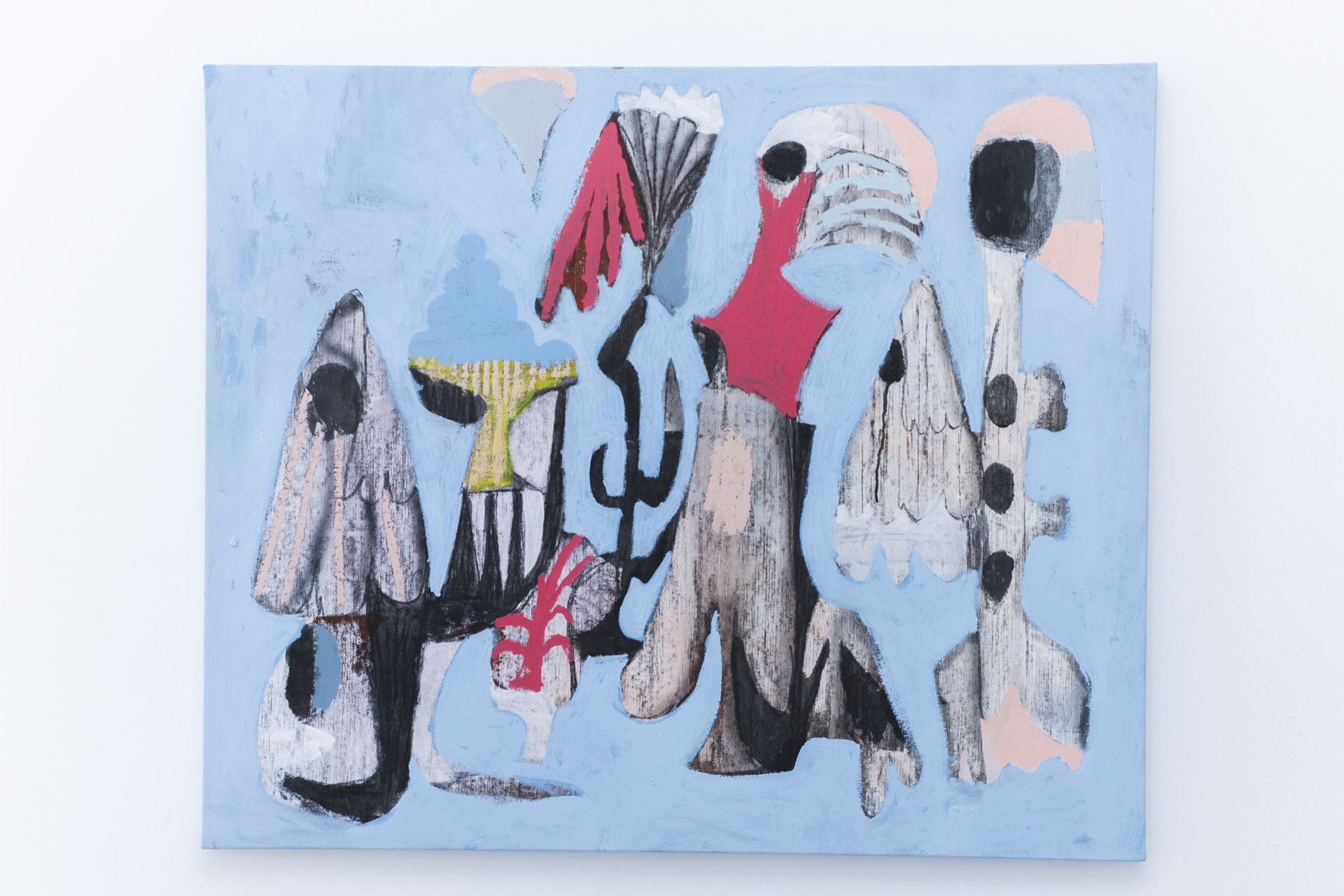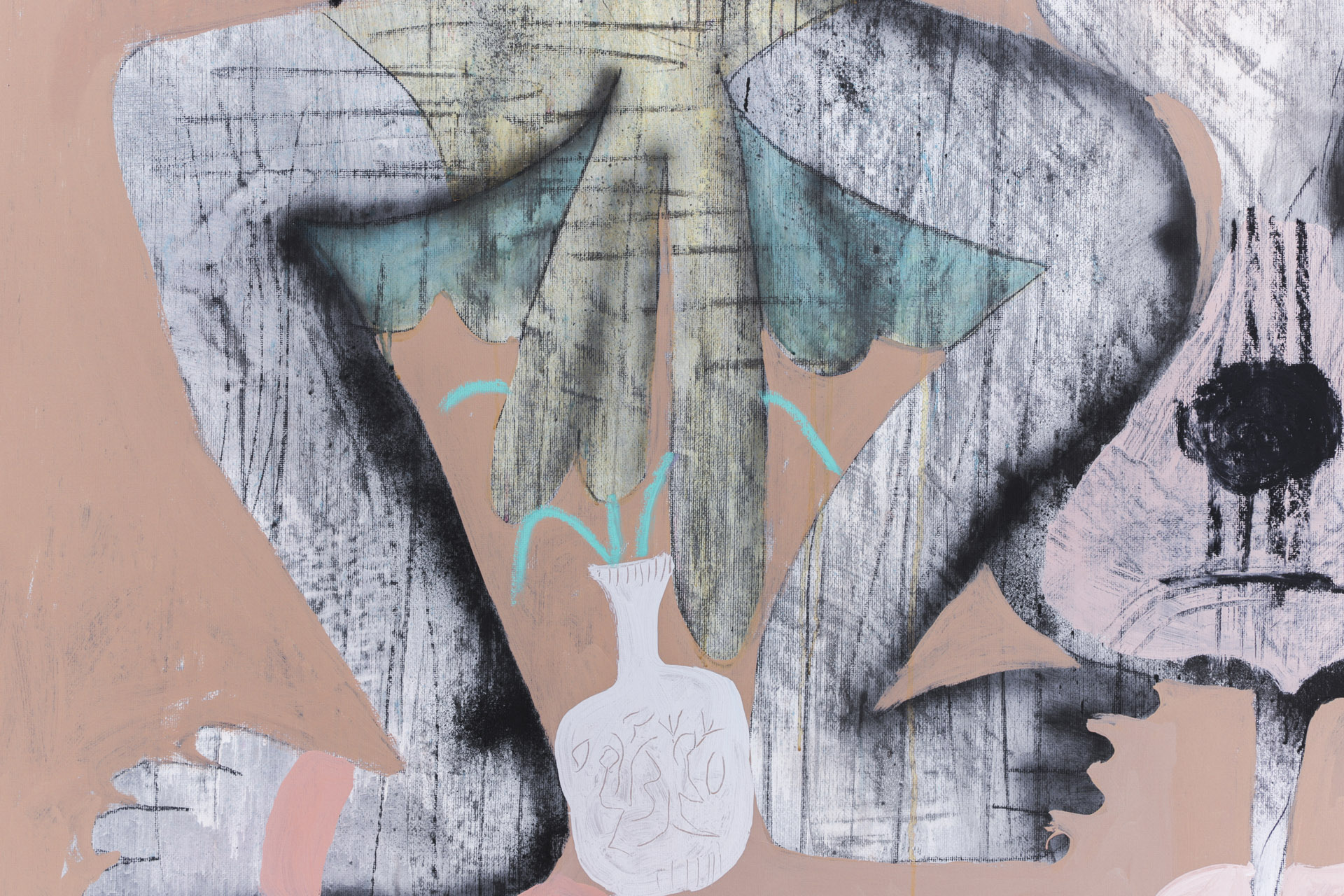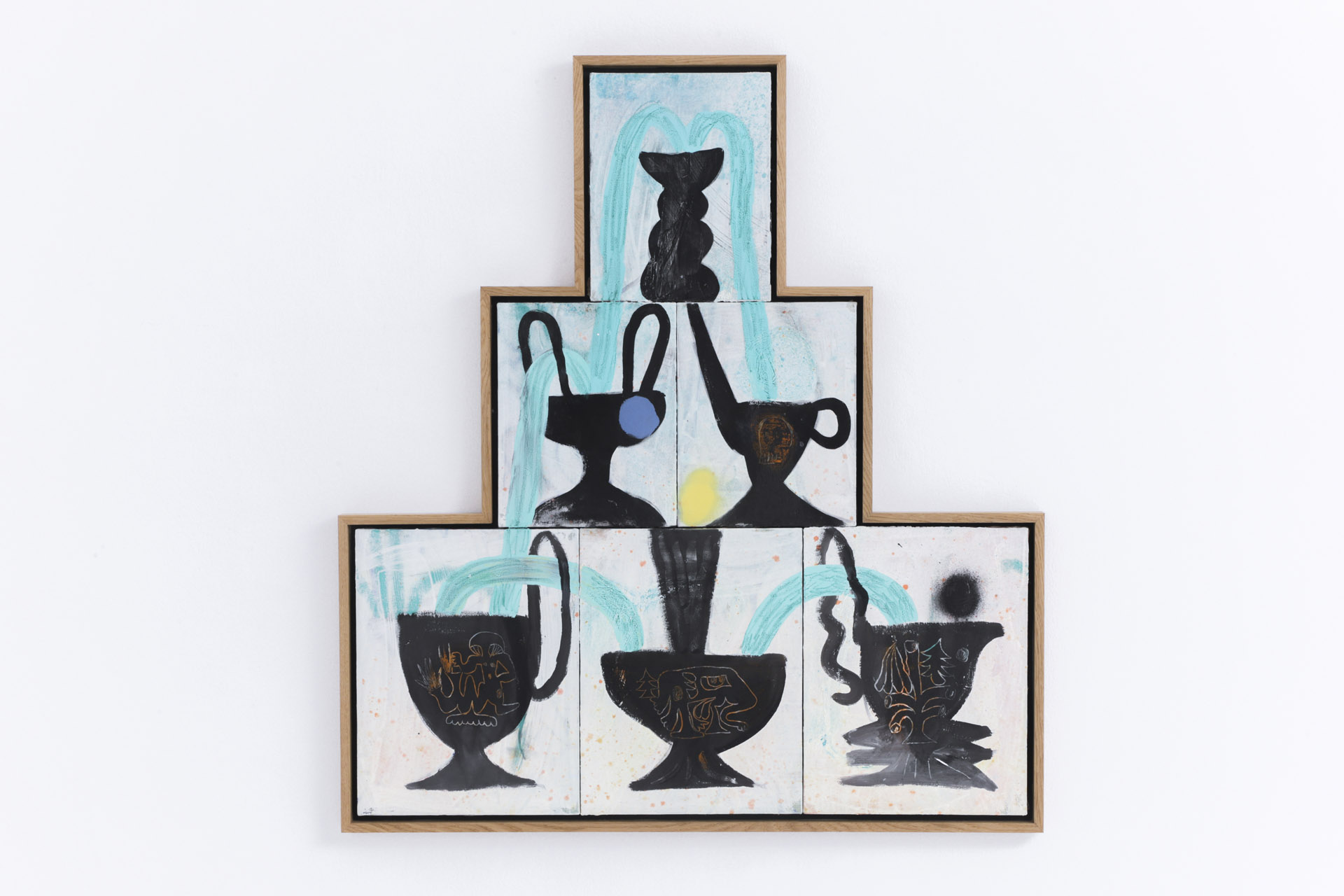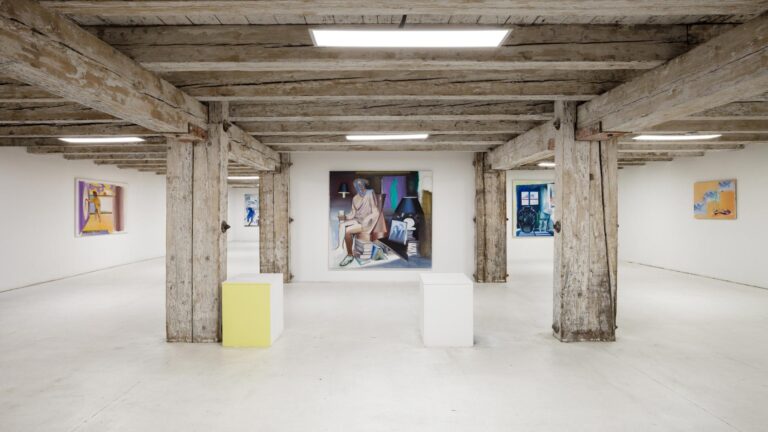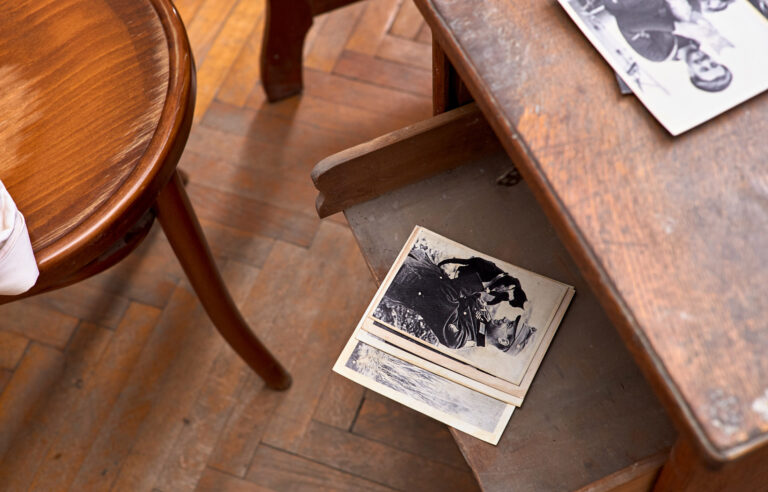Artist: József Csató
Exhibition title: Balancing On The Top Of The Fountain
Curated by: Peter Bencze
Venue: Ravnikar Gallery Space, Ljubljana, Slovenia
Date: March 24 – April 19, 2021
Photography: all images copyright and courtesy of the artist and Ravnikar Gallery Space, Ljubljana
Beyond being a testament to human craft and decorative beauty, the fountain throughout art history has been a symbol for rejuvenation, joy and life. As much as water is associated with reflection, ritual and the subconscious, the fountain almost serves as a gateway or rite of passage to accessing that internal wisdom or the Self that’s atemporal and in constant flux.
Given József Csató’s ongoing interest in rituality and symbolism in his paintings, the fountain emerges as an evocative icon. It’s a structure that brings together planning and chance, mad-made design and the force of nature, permanence and transience. These two energies also find balance in Csató’s work. In his idiosyncratic assemblages that channel Modernist and Surrealist tropes into hybrid timelines, fresh pastel palettes and fluid iconographies, we see an intriguing dance unfolding between the archaic and the present, the mythical and the mundane. Alongside the central motif of the fountain, there are other ‘vessels’ like the abstracted instrument and human figure in the painting Sleep and Instrument (2021) and the various vases and plant holders in the humorous drawing Better Days (2021). Some of his recurring motifs from what he calls his “clubs of form”, like plants, cartoonish eyes, vases, instruments and anthropomorphic shapes. These blend in with abstractual forms and “happy accidents” on his canvases in a manner that feels playful yet precise.
These symbols are derived from a varied visual vocabulary of everything that “left a unique imprint” onto the artist’s mind, from ancient iconographies, still-life painting, mythology, cinema and furniture design to children’s drawings. He plays with the sense of familiarity and subconscious associations evoked by his forms, whether they remind the viewer of something from everyday domestic life, fictional narratives or canvases of Matisse or de Kooning. In Csató’s world, symbols, culture and life itself are subject to perpetual transience and semiotic metamorphosis.
Feelings of fantastical escapism can perhaps be considered symptoms of the introspective mind – the pandemic has certainly pushed the subconscious more into the forefront of our everyday lives. Csató’s works carry an air of escapism and yearning for the past, as suggested in the title of his work Source of my Nostalgia (2021), but this yearning isn’t too heavy or overly dissociated from reality. Balancing on top of the fountain thus brings this sense of escapism into unison with inevitable cycles of change. Instead of being stuck in the past, Csató’s nostalgia has a more hopeful tone that finds rituality in the everyday and conjures forth a brighter future yet to come.
Sonja Teszler, 2021

